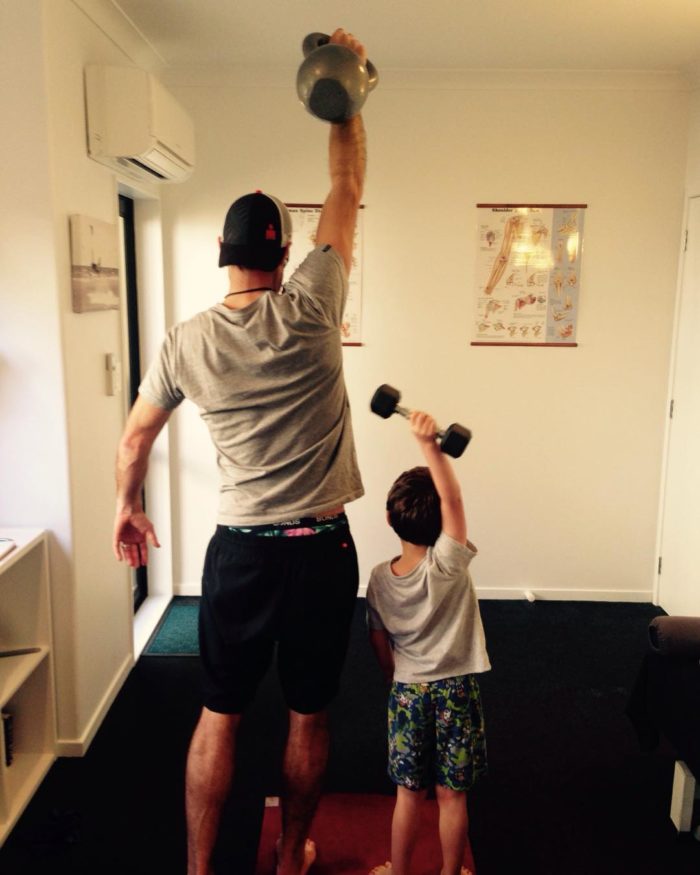Shoulder Strength and Stability: Why It Matters
Shoulder strength and stability are critical due to the inherently shallow and unstable nature of the shoulder joint. Unlike more stable joints such as the hip, the shoulder relies heavily on muscular control to position the upper arm bone (humerus) correctly into the socket (glenoid fossa).
Shoulder pain and weakness are common issues and can be difficult to resolve. This article will cover the basic anatomyof the shoulder and outline common causes of pain, along with practical solutions for injury prevention and long-term shoulder health.
Shoulder Musculature
The shoulder joint is stabilized by ligaments and controlled by a group of muscles known as the rotator cuff. This group includes:
- Supraspinatus
- Infraspinatus
- Teres Minor
- Subscapularis
While each has its own function, their primary collective role is to stabilize the shoulder joint (glenohumeral joint). Initial joint stabilisation is essential – it lays the foundation for larger muscles (known as prime movers) to generate strength and power.
These prime movers include:
- Deltoids
- Pectoralis Major
- Latissimus Dorsi
- Trapezius
- Biceps and Triceps
For optimal function, the rotator cuff and prime movers must work in coordination to ensure both stability and power through the shoulder’s wide range of motion.
Common Causes of Shoulder Pain
1. Sedentary Lifestyles and Poor Posture
One of the leading contributors to shoulder dysfunction is our increasingly sedentary lifestyle. The average person sits for 10–15 hours a day, placing strain on postural muscles and diminishing core function.
Poor posture negatively affects joint alignment, and in the shoulder, this misalignment often causes the rotator cuff muscles to become overworked and dysfunctional, leading to:
- Shoulder impingement
- Muscle strains
- Instability and chronic pain
2. Muscle Imbalances and Poor Lifting Technique
Even individuals with good strength and fitness can experience shoulder issues due to imbalanced training or poor biomechanics.
A common pattern is:
- Excessive strength in the chest (e.g., from pressing movements)
- Weakness or lack of control in the mid and upper back (thoracic region)
Additionally, lifting or bending through the back without engaging the abdominals, lats, or spinal stabilizers can transfer excessive strain to the shoulders.
Solving Shoulder Pain
If you’re experiencing shoulder pain, the first step is to seek guidance from a qualified professional with expertise in shoulder mechanics. Identifying the true source of dysfunction is key.
Rehab exercises alone aren’t enough. You must also:
- Correct your posture
- Improve biomechanics
- Strengthen your core and thoracic musculature
Pain is often just the symptom, not the root cause – so taking a broader view of your movement patterns is essential.
Prevention and Progression
If you’re currently pain free or have finished your rehab process, now is the time to focus on preventative care.
The Movement Series is a great starting point.
These routines are designed to:
- Identify imbalances
- Improve movement efficiency
- Restore foundational motor patterns
Once these basics are solid, move on to the Core and Strength Series to further enhance shoulder resilience and performance.
Final Thoughts
Modern life doesn’t challenge our movement like it used to. We no longer climb, build, carry, or move in ways that develop full-body strength and joint integrity. Reintroducing these movement patterns is essential to protect not only the shoulder but the entire body.
If you’re dealing with shoulder pain, don’t ignore it – and don’t assume the issue is resolved just because the pain subsides. Continue to build strength, balance, and control with targeted movement practices.
Prevention is always better than cure. Invest in your movement quality today and build the strong, stable shoulders your body needs for life.

